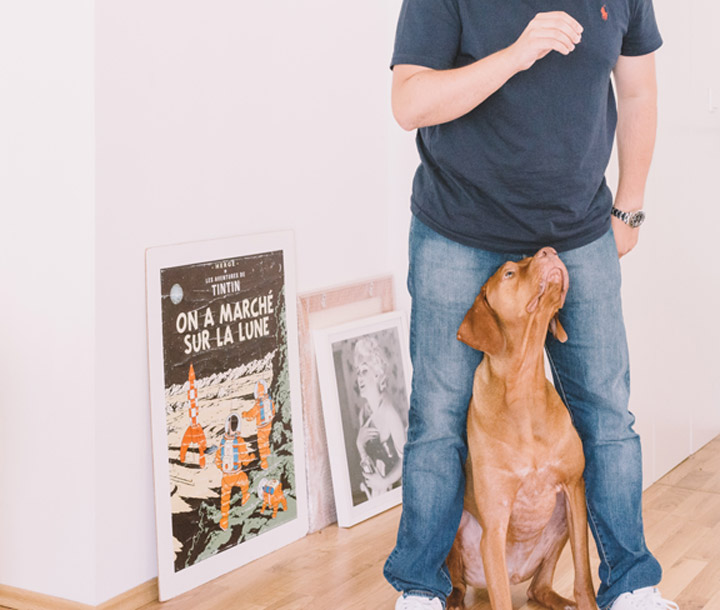Most of your dog's behavior is a direct result of reinforcement. In essence, when your dog presents a certain behavior, it is your acceptance or acknowledgment of that behavior that supports its continuation and repetition.
Many people feel guilty once they learn that they might have perpetrated bad behavior in their pet. Although it may be natural to feel this way about establishing a certain behavior in your dog, behavior is not stamped in stone. Keep in mind that, if your dog is adopted, it may have been a previous owner who imprinted the behavior. Or, it could be a friend, relative or neighbor who supported unwanted behavior in your dog. Anyone who interacts with your dog has the potential of reinforcing behaviors. Using the proper methods, you can always change a behavior you may have accidentally reinforced in the past that is causing problems with your dog in the present.
A simple way to begin reinforcement training is to think about what your dog likes. Food often works best, but praise, petting, tone of voice, certain words, facial expressions or a particular toy might work best. Any one or a combination of these "reinforcers" can help determine your dog's behavior. Simply stated, when your dog does something you like, immediately do something your dog likes. It's that easy.

To illustrate reinforcement, let's start with a puppy. When a puppy is born, he or she immediately starts showing certain behaviors. Some behaviors are reinforced and some are not. The vast majority of the behaviors your dog has when he or she is older than a year are the result of intentional corroboration, whether accidental or intentional. Research does indicate that genes, for the most part, give a dog a predisposition to have certain behaviors, but the vast majority of behaviors you might object to (i.e. chewing, barking, sleeping in your bed) is learned. That is how powerful reinforcement training can be.
It has been estimated that one reinforcement can increase the probability of a recurring behavior from near zero to as much as 80 percent. A single reinforcement can almost guarantee that a behavior will happen again in the future. Another important consideration is the timing of the particular reinforcement. Four-tenths of a second after a dog performs a behavior is the optimal time to fortify that particular behavior. Basically, the faster you react to your dog's behavior, the more the dog will understand that particular behavior is acceptable. For example, think of training your dog to sit. You tell your dog to sit, and he does. If you wait until he is standing again to praise him, he will think you are praising him for standing.
Often, the behavior that is least pleasing to you is one that you reinforce without realizing. For example, if your dog jumps on you, how do you react? If you touch your dog or pet him while he's on two legs, you are reinforcing the problem. If your dog growls at someone when they enter your home and you say, "It's okay" in a calming voice that your dog hears under normal circumstances, you are reinforcing the bad behavior. As you can see, it's very easy to either create or aggravate any behavior pattern without the proper knowledge.
So, once you have identified the problem, what's next? At first, it may seem impossible to reinforce certain behaviors with your dog. To change a behavior takes time, patience and a little extra skill. The solution lies in reinforcing the incompatible behavior. The easiest way to understand incompatible behavior is to acknowledge that a dog is unable to do two opposing behaviors at the same time. For example, a dog is unable to sit and jump up at the same time just as a dog can't be friendly and aggressive at the same time.
Since each dog is unique, there are a number of different ways to tweak incompatible reinforcement. If your dog jumps on you every time he approaches you, command him to sit and reinforce the sitting behavior. Because sitting is incompatible with jumping, it is necessary for your dog to one or the other. By reinforcing the preferred behavior, you're letting your dog know that sitting is good and jumping is not.
It may take a lot of trial and error for you to determine which incompatible behaviors works best and how to reinforce them to your dog. In the long run, both you and your dog will be happier. However, remember that how you react to a behavior your dog presents is lasting. Never punish your dog with abuse, physical or verbal, or you will be reinforcing certain behaviors that are generally found in aggressive, defensive or extremely submissive dogs. None of these overarching behaviors are acceptable at any time. It is important for you to establish an open line of communication with your dog. Find what makes him happy, and you will be able to make yourself happy at the same time.





